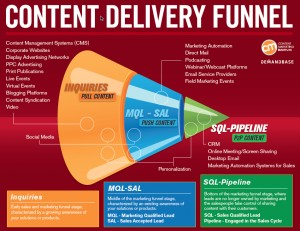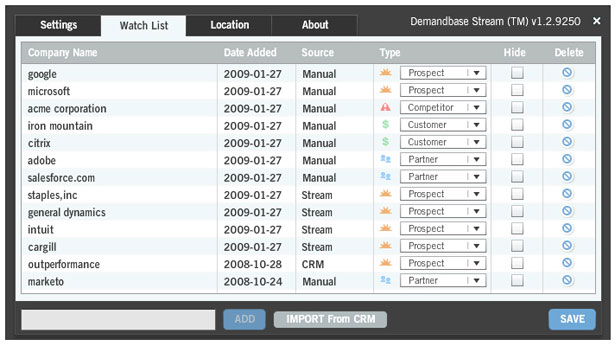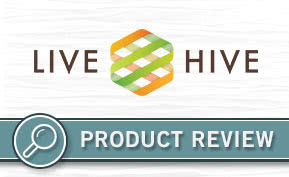Sales Tools
Demandbase Converts Your Web Traffic To Sales

Increasing traffic and visibility is key for sales-oriented businesses on the web. But how many of those hits translate into actionable leads for the company? Demandbase has developed a technology that addresses this issue by unveiling the identities of every company that visits your site. We talked to Demandbase CEO Chris Golec to find out more about this hot technology.

WEBSITE: www.demandbase.com
FOUNDED: 2006
LOCATION: San Francisco, CA
CUSTOMERS: Adobe Systems, Informatica, Motorola Solutions, Salesforce.com
What was the inspiration behind Demandbase? What was the business need you saw that wasn’t being addressed at that time?
Back in the middle of 2000 I was providing kind of consulting services to variety of different companies all around the demand generation and marketing space and I just saw a huge opportunity to you know fundamentally fix on my marketing so it wasn’t about measuring it. It wasn’t about automating it.
It was more like, how do we go after the big issues? For example, two percent conversion rate was kind of the average so as I look at that 98 percent lack of response, how we go after that lack of response and how do we improve that for customers so if you look across the marketing stack you know everything from quality of marketing list to tech-targeted advertising to conversion rates and engagement. Everything that we innovate has always been around fundamentally changing how marketing is done to get much bigger results for the customer.
So you got started around 2006, right?
Yeah, we started forming the business around then, and then we were financed in early 2007.
That’s now considered kind of a long time for the tech world. There are a lot of independents out there who’ve been around half as long. How have you seen your segment change since 2006?
That’s a good question. You know when we first started the business the person we went after with our technology had a marketing list, and we wanted to provide a much better way to build much more targeted lists. We did that by partnering up with all the different data providers and in the process of doing that first product we evolved into more of a lead generation software business where we would add web traffic to this business contact’s databases. In the process of doing that we identified an opportunity that was not being addressed and that is an ability to look at an IP address and know the exact business behind it.
This was at a much greater scale than what you can do today through traditional methods, and in the process of uncovering this opportunity we ended up building our own dataset mapping, mapping the IP addresses to millions of businesses. We figured out ways to do it so that we can uncover who the company is even though they might be hidden behind Comcast or Verizon.
And so about two years ago we introduced a technology to make it available to everybody, make it available for people to plug into their website, into their CRM system, into their marketing automation systems, and that took off for us. At that point we ultimately exited the lead generation software and business contact business in favor going after this much, much bigger market opportunity around business identification and personalization and targeting.
Are there any industries in particular that you are targeting your service towards? Alternatively, are there specific industries that are coming to you with the most need for your service?
You know, any industry where the web is important to them is a target for us. Now that’s becoming just about every industry, but other than predominantly software technology companies we are getting a lot of financial services, and businesses that sell to other businesses.
A lot of times you will find companies that serve both consumers and businesses. They are challenged because they have to provide a web experience that talks to both audiences, and it’s really hard to do that. As a result customers before coming to Demandbase may have very high abandonment rates on their websites. They weren’t able to get people to the right places. So if you look at it, you know, companies like Comcast serve residents and they serve businesses and large enterprises, and now they can change the experience for each of those different audience segments.
You mentioned you started out more on the lead gen side, and that’s a pretty competitive market. Now you’ve moved onto something that’s almost completely different. Is this a field where you’re encountering a lot of competition as well, or are you finding that you’re breaking a lot of new ground?
It’s very much groundbreaking. We are the only company in the world that has this sort of IP business mapping at the scale we do. With those proprietary data assets that keep growing we are adding and covering about 50,000 new companies every month to that dataset. So we have this proprietary dataset and now we are adding modules like a personalization module that you plug into your CMS system.
How did your proprietary platform, the business resolution platform, which is at the heart of your business, come about? Was it something you were already working on in prototypical form in your previous work, or was there a single eureka moment?
We started building the dataset because the traditional ways of doing it just don’t work very well, and that is if you look at an IP address and you do look it up in the internet registry a lot of times you won’t be able to find the company name. It will say “Comcast” or “Verizon,” so you have no idea who that visitor is. Sometimes you will find a name of an organization, but it’s the name of the server, not the company.
With traditional reverse IP you’re only going to get about one out of six to identify. We found we could triple that without a questions, and so that dataset was making our product so much better that the light bulb went off: “God, if it makes our product better we can make websites better. We can make advertising better.”
That spawned all these different solutions that can sit on top of our platform, whether you use Eloqua or Marketo or Druple, Interwoven, Salesforce or Microsoft CRM, we plug into those products and make them more effective for B2B.
You have more than 1,000 clients right now. Have you seen any strong correlations in terms of services that they would like added onto the product or ways you could improve it?
I think the feedback from the clients is very strong. I think that’s underscored by the fact that they’re growing with us. The average customer grows at 25-to-30 percent per year with us and so they may get started by plugging into the market automation system, but eight months later it’s very likely that they are going to plug into their CMS. They generally start with one use case if you will for our technology and then it expands over time from there.
The results are very clear. If you are getting two percent conversion rate right now and you plug into Demandbase, all of a sudden you are at 6.5 percent. There’s just no question that you’ll know the value, because it goes right back to the bottom line of all your online marketing spending.
Is this a service that you are finding that clients are already coming to you with already knowing that they have a need for, or is there an educational aspect when you’re seeking out potential clients?
There’s definitely an educational aspect, because you know we don’t really have any direct competitors and we’re in a kind of new category if you will. That said, I break up the internet up into three different decades.
The first decade everybody was trying to get a website, gain a web presence and just getting online. That was the 90s if you will. The next ten years is all about generating clicks and traffic. How many people can I get to my website, let me keep spending money and grow it and grow it and grow it.
How many data qualified leads are actually coming through or my existing customers using my website? Everybody really is pausing now and saying all the sales start on the website. All my customers come to the website for service and to look up information, and so how do I make my website much more effective?
Where do you see the sort of technology you’re working on going in the next five years? What kind of challenges and opportunities are on the horizon?
Well, I was going to say even within the next 12 months I think the big opportunity we will address is the ability to connect everything from spending all the way to revenue–what that means exactly is enabling our platform to impact everything from online display advertising on your website, to your CRM system so that you can effectively target a new account and see the impact of the impressions you are serving out on the web, to the visits to your website, to the leads that are generated, to the pipeline, to the revenue. If we can put all of that together in an elegant dashboard, now you’ve really got something.
Is the market for enterprise software going to see more and more consolidation going forward, or is there always going to be a space for smaller independents doing their own thing who aren’t really just there to make their IPO and look for a buyout offer?
Yeah, well, you know I think there’ll always be those exist opportunities, and there’s always a need for those kinds of best-of-breed-type solutions, but at the end of the day customers can only use so many different tools. The more they can be embedded into Salesforce or whatever you might be using, the better it is for the customer, and that’s what drives sales.
I think you will see more consolidation, but at the same time, look at a company like Salesforce. Just given their size they can create whole new categories and features and functionality in a few months versus a smaller company trying to do that on their own. It’s a lot easier to build off their platform now, but being solely dependent on that is a tough model. There are a couple that have done very well with it, but that’s out of how many thousands of solutions on the app exchange right now? Only a handful really get meaningful sales from that.
I mean, there’s a lot of four-to-five-person small companies that can do this, but if you want to have a 1,000-person software company that’s highly profitable and has an opportunity to go public, you can’t just do it on the backs of Salesforce.
Other than yourselves who are some of the most interesting individuals or companies working in the industry right now?
I’ve really liked what HubSpot is doing, and they’ve had rapid growth. The reason I picked them out is that their footprint is different from the other marketing automation guys. They are not just doing the kind of lead management, they’re actually offering some CMS functionality too, and with web analytics too, which I think is very interesting because they had more expansion for their platform.
Marketo has done a wonderful job with customer acquisition rates and growing their business faster than just about anybody else in that space. It will be interesting to see what happens to them over the next six months, whether they end up going public or continuing to grow or going through some kind of consolidation with a larger company.







